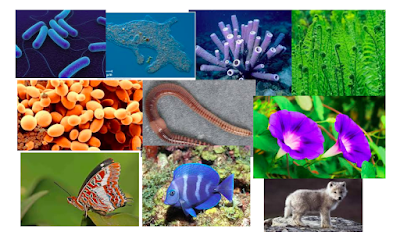Watch the video on Biome, Habitat, Niche Watch the following Brainpops Username - 7thgradehmsscience Password - clippers04096 Brainpop- Biomes - Click here for video Brainpop Ecosystem - Click here for video Biome vs Ecosystem: A biome is an area of the planet that can be classified according to the plants and animals that live in it. Temperature , soil , and the amount of light and water help determine what life exists in a biome. A biome is different from an ecosystem . An ecosystem is the interaction of living and nonliving things in an environment . A biome is a specific geographic area notable for the species living there. A biome can be made up of many ecosystems. For example, an aquatic biome can contain ecosystems such as coral reef s and kelp forest s. - From National Geographic Complete the WORKSHEET - Biome, Ecosystem, Habitat, Niche Click here to access and complete Examples of Different Biomes Around the World Watch the reading of the book Salamander Room Answe



